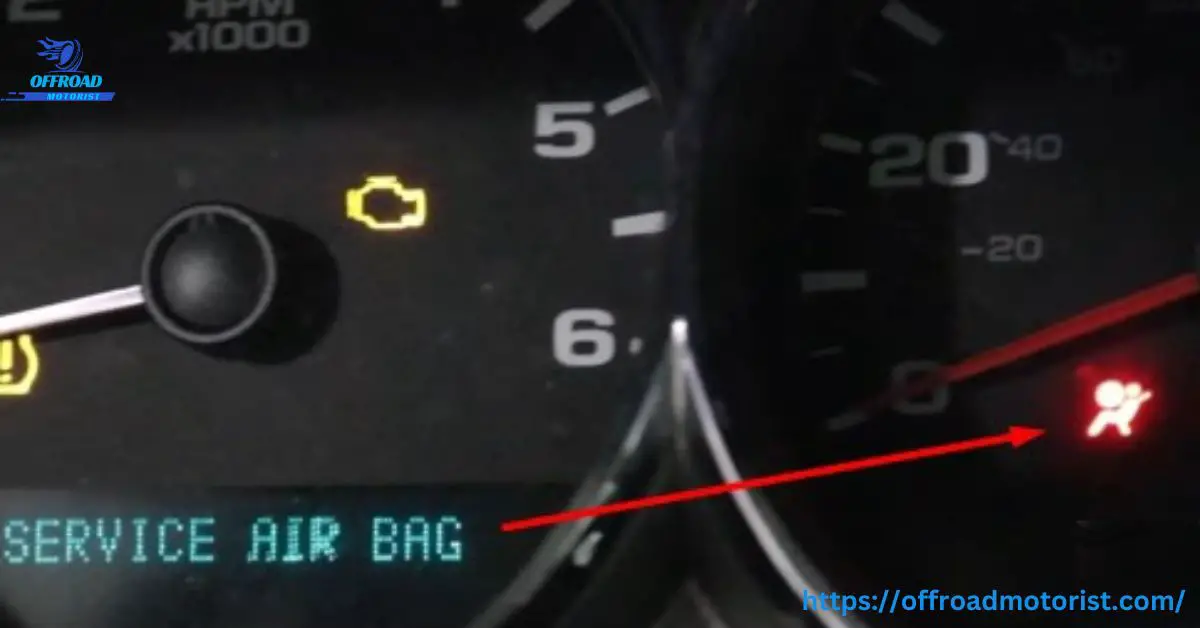Chevy Silverado Heater Not Working? [Top 05 Reasons & How to Fix them]
The heater control system is essential to any vehicle, especially during the colder months. In a Silverado truck, the heater control system regulates the temperature inside the cabin by controlling the flow of hot coolant through the heater core.
If your Chevy Silverado heater not working, it can make your driving experience uncomfortable and unpleasant. Don’t worry, as there are several reasons why this may be happening, and many of these issues can be quickly resolved.
In this blog post, we will discuss the top 5 reasons why your Chevy Silverado heater is not working, along with step-by-step instructions on diagnosing and fixing each issue.
Reason 01: Faulty Thermostat
A thermostat is a temperature-sensitive valve located in the engine coolant system. Its primary role is to regulate coolant flow through the engine and radiator to maintain the engine’s operating temperature.
In a Silverado truck, the thermostat also plays a crucial role in the heater control system.
How the Thermostat Works and Its Role in the Heater Control System
When the engine is cold, the thermostat remains closed, preventing the coolant from circulating through the engine and radiator.
The thermostat gradually opens as the engine heats up, allowing the coolant to flow through the engine and radiator. This helps maintain the engine’s ideal operating temperature and keeps it from overheating.
The thermostat also controls the flow of coolant through the heater core. The heater core is a small radiator located inside the cabin that warms the air before it is blown into the cabin.
If the thermostat is faulty, it may not allow the right amount of coolant to flow through the heater core, causing the cabin to remain cold even when the engine is warm.
Symptoms of a Faulty Thermostat in a Silverado Truck
There are several signs that your Silverado’s thermostat may be faulty, including:
- The engine takes a long time to warm up, or it doesn’t reach its normal operating temperature
- The engine overheats
- The heater blows cold air even when the engine is warm
- The coolant level is low, or there are coolant leaks
How to Diagnose and Fix a Faulty Thermostat
A faulty thermostat can cause problems with your Silverado’s heater control system. If you suspect your thermostat is defective, diagnosing and fixing the issue as soon as possible is important. Allow the engine to cool down before you begin.
- Locate the thermostat housing. It is usually located near the engine’s top radiator hose.
- Remove the thermostat housing cover and inspect the thermostat. It may need to be replaced if it appears corroded, damaged, or stuck in the closed position.
- Use a thermometer to check the engine’s operating temperature. The thermostat may be faulty if the temperature does not reach the normal operating range.
- Install a new thermostat and thermostat gasket if the old thermostat is faulty. Reassemble the thermostat housing cover and fill the coolant system as necessary.
- Start the engine and let it run for a few minutes to ensure the thermostat works correctly.
- Check for leaks and ensure the cabin heating system works correctly.
Following these step-by-step instructions, you can diagnose and fix a faulty thermostat in your Silverado truck and ensure your cabin stays warm during those cold winter months.
Reason 02: Blown Fuse
Fuses are essential electrical safety devices that protect your Silverado’s electrical system from damage caused by electrical surges, short circuits, or other electrical malfunctions.
Suppose a component in your Silverado’s heater control system draws too much current. In that case, it can cause the fuse to blow, interrupting the electrical circuit and preventing the heater control system from functioning correctly.
How Fuses Work and Their Role in the Heater Control System
Fuses are designed to break or “blow” if the electrical system has a current overload or short circuit. When a fuse blows, it cuts off the electrical circuit and prevents damage to the electrical components.
In a Silverado truck, the heater control system relies on several fuses to protect its electrical components, including the blower motor, heater control valve, and HVAC control module.
Symptoms of a Blown Fuse in a Silverado Truck
If a fuse in your Silverado’s heater control system is blown, you may experience one or more of the following symptoms:
- The heater fan does not work
- The heater blows cold air
- The HVAC control panel is not functioning
- The blower motor does not work at all
How to Locate and Replace a Blown Fuse
Follow these steps to locate and replace a blown fuse in your Silverado truck and ensure your heater control system functions correctly.
- Turn off the engine and remove the key from the ignition.
- Open the fuse box cover under the vehicle’s driver’s dashboard.
- Locate the fuse for the heater control system. The owner’s manual or the diagram on the fuse box cover can help you find the correct fuse.
- Use a fuse puller or pliers to remove the blown fuse from its socket.
- Inspect the fuse to see if it is blown. A blown fuse will have a broken wire inside the fuse or may appear discolored.
- Replace the blown fuse with a new fuse of the same amperage rating. The amperage rating is usually printed on the fuse or in the owner’s manual.
- Reinstall the fuse box cover and turn the engine on to test the heater control system.
A blown fuse can cause problems with your Silverado’s heater control system. Diagnosing and fixing the issue immediately is important if you suspect a blown fuse.
Reason 03: Broken Heater Control Valve
The heater control valve is an essential component in the Silverado’s heating system that regulates the flow of hot coolant to the heater core.
When the heater control valve is broken, it can cause problems with the heater control system, resulting in a lack of heat in the cabin.
Explanation of the Heater Control Valve and Its Role in the Heater Control System
The heater control valve is typically located in the engine compartment and regulates the flow of hot coolant through the heater core. When the heater control valve is open, hot coolant flows into the heater core, warming the air before it is blown into the cabin.
If the heater control valve is closed or partially closed, no hot coolant will flow into the heater core, resulting in a lack of heat in the cabin.
Symptoms of a Broken Heater Control Valve in a Silverado Truck
If the heater control valve in your Silverado is broken, you may experience one or more of the following symptoms:
- No heat or lukewarm air coming from the vents when the heater is turned on
- A coolant leak from the heater control valve
- Unusual noises coming from the heater control valve
How to Diagnose and Fix a Broken Heater Control Valve
- Turn off the engine and let it cool down before you begin.
- Locate the heater control valve in the engine compartment. The owner’s manual or a repair manual can help you find it.
- Inspect the heater control valve for any signs of damage, such as cracks or leaks.
- Turn the heater on and feel the hoses leading to and from the heater control valve. If the hoses are warm on one side and cold on the other, the heater control valve is likely not functioning correctly.
- Disconnect the heater hoses from the heater control valve and use a multimeter to check the resistance across the heater control valve terminals. If the resistance is infinite, the heater control valve is likely broken and needs to be replaced.
- Replace the broken heater control valve with a new one and reattach the hoses.
- Refill the coolant system as necessary, and check for leaks.
- Start the engine and let it run for a few minutes to ensure the heater control valve works correctly.
Following these step-by-step instructions, you can diagnose and fix a broken heater control valve in your Silverado truck and ensure your cabin stays warm during those cold winter months.
Reason 04: Failed Blower Motor
The blower motor is responsible for blowing the warm air from the heater core into the cabin of your Silverado truck. If the blower motor fails, it can cause problems with the heater control system, resulting in a lack of warm air in the cabin.
Explanation of the Blower Motor and Its Role in the Heater Control System
The blower motor is typically located in the HVAC unit under the vehicle’s passenger-side dashboard. The motor is responsible for blowing the warm air from the heater core into the cabin.
The blower motor works in conjunction with the heater control module to regulate the speed of the blower motor and control the temperature of the air coming from the vents.
Symptoms of a Failed Blower Motor in a Silverado Truck
If the blower motor in your Silverado has failed, you may experience one or more of the following symptoms:
- No air blowing from the vents when the heater is turned on
- Reduced airflow from the vents
- Unusual noises coming from the blower motor
- A burning smell coming from the vents
How to Diagnose and Replace a Failed Blower Motor
If you experience any symptoms of a failed blower motor, such as no or weak airflow. Here are a few steps you can take to diagnose & Fix the problem:
- Turn off the engine and let it cool down before you begin.
- Locate the blower motor under the dashboard on the vehicle’s passenger side.
- Disconnect the electrical connector and remove the blower motor from the HVAC unit.
- Use a multimeter to check the resistance across the blower motor terminals. If the resistance is infinite, the blower motor is likely faulty and needs to be replaced.
- Replace the faulty blower motor with a new one.
- Reconnect the electrical connector and reattach the blower motor to the HVAC unit.
- Start the engine and let it run for a few minutes to ensure the blower motor works correctly.
The blower motor is a critical component of the HVAC system in a vehicle. It circulates air through the system to provide heating or cooling to the passengers. Diagnosing and replacing the blower motor is essential to avoid further damage.
Reason 05: Electrical Issues
Electrical issues can cause problems with your Silverado’s heater control system, preventing it from functioning correctly. Various electrical components in the heater control system can cause issues, such as faulty wiring, loose connections, or malfunctioning sensors.
Electrical Issues That Can Cause the Heater Control System to Malfunction
Several electrical issues can cause problems with the heater control system in your Silverado truck. These include:
- A malfunctioning HVAC control module
- A failed temperature sensor
- Corroded or damaged wiring
- Loose or disconnected electrical connections
Symptoms of Electrical Issues in a Silverado Truck
If your Silverado’s heater control system is experiencing electrical issues, you may experience one or more of the following symptoms:
- The heater fan does not work
- The heater blows cold air
- The HVAC control panel is not functioning
- The blower motor does not work at all
How to Diagnose and Fix Electrical Issues
Diagnosing electrical issues in your Silverado’s heater control system can be challenging and may require a multimeter and a wiring diagram. Here are some general steps you can take to diagnose and fix electrical issues:
- Turn off the engine and let it cool down before you begin.
- Use a multimeter to test the electrical connections and wiring in the heater control system. Check for continuity and resistance across the wires and connectors.
- Check for any loose or disconnected electrical connections and reconnect them as necessary.
- Inspect the wiring and connections for any signs of corrosion or damage, and repair or replace any damaged components.
- If the issue is with the HVAC control module or temperature sensor, have the system diagnosed by a professional mechanic.
- Test the heater control system after repairing or replacing any electrical components.
By following these general steps, you can diagnose and fix electrical issues in your Silverado truck.
Ac Low-Pressure Drops To Zero When Running? Check out our article and find the best solution.
FAQs on Chevy Silverado Heater Control Not Working
We will explore people’s common questions about Chevy Silverado heater issues. By understanding more about the problem and how to fix it, you can get your heater working properly again and stay comfortable on the road.
How much does it cost to fix a Chevy Silverado heater?
The cost to fix a Chevy Silverado heater can vary depending on the underlying cause of the problem. Repairs could range from a simple fuse replacement costing less than $20 to a replacement of the heater core costing several hundred dollars.
How do I flush the heater core on my Chevy Silverado?
To flush the heater core on your Chevy Silverado, you will need to disconnect the heater hoses and use a garden hose to flush out any debris. Use a flushing solution to help remove any buildup.
How do I replace the heater blend door on my Chevy Silverado?
To replace the heater blend door on your Chevy Silverado, you must remove the dashboard, locate the blend door actuator, remove the actuator, and replace the blend door.
Can a bad thermostat cause the Chevy Silverado heater to not work?
Yes, a bad thermostat can cause the Chevy Silverado heater to malfunction. If the thermostat is stuck open or closed, it can prevent the engine from reaching the correct operating temperature, affecting the heater’s performance.
How do I replace the heater hoses on my Chevy Silverado?
To replace the heater hoses on your Chevy Silverado, you will need to drain the coolant, locate the heater hoses, disconnect them from the heater core and engine, and install new hoses.
How do I troubleshoot a Chevy Silverado heater blower motor?
To troubleshoot a Chevy Silverado heater blower motor, you will need to check the fuses, relay, switch, and wiring. You may also need to inspect the blower motor itself for any signs of damage or wear.
How do I check the heater control valve on my Chevy Silverado?
To check the heater control valve on your Chevy Silverado, you will need to locate the valve and check the vacuum hoses and electrical connections. You can also check the valve for any signs of damage or wear.
Final Thoughts on Any Issues with Heater Control System
Neglecting minor problems with your heater control system can lead to more significant issues down the road, resulting in expensive repairs or replacements.
So, if you experience any symptoms of a malfunctioning heater control system, such as no heat or cold air from the vents, reduced airflow, or unusual noises, take action immediately.
If you’re unsure how to diagnose or fix any issues with your Silverado’s heater control system, don’t hesitate to seek the help of a professional mechanic. They can diagnose the problem and offer expert advice on the best action.
Take action today, and ensure your heater control system works correctly.






